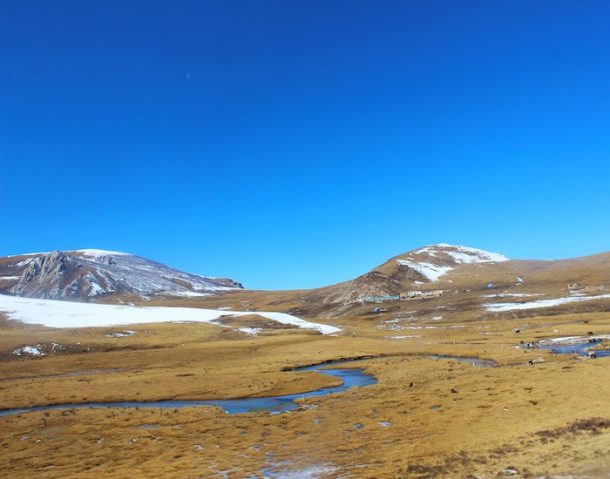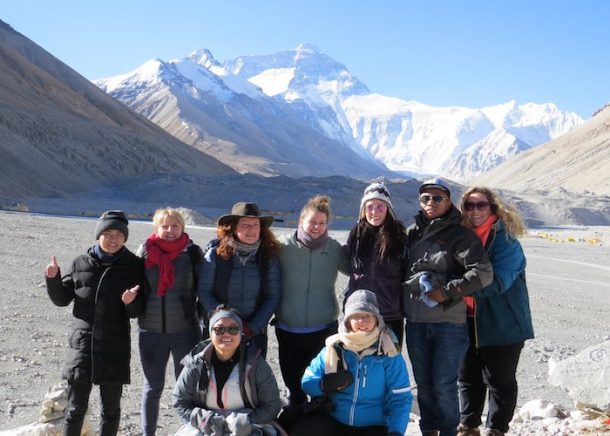Is Tibet a safe place to Travel?
“The journey to Tibet is a long one, often fraught with danger and disaster, from which many men will never return.”
While this may have been true for the famous botanist and National Geographic writer, Joseph Rock. When he made his eventful expeditions to Southwest China and Tibet in the early 1920s, these days, there is little danger and peril to be seen on the long journey to Tibet from China.
In fact, the worst thing you will come across is something you will never be able to avoid – altitude sickness. With the unusual political situation in Tibet, many people ask if it is a safe place to travel to. While there are some things to take care of, in general, Tibet is probably one of the safest tourist destinations in the world
Table of Contents
Crime, Money, and Valuables
Crime is actually rare in Tibet, and traveling to the Tibet region is generally much safer than traveling in most other parts of China. That is not to say that crimes do not happen, they do, just less frequently than in most other places. Violent crimes are normally rare, and petty theft, which does sometimes occur. It is usually an opportunist crime, rather than a planned one. Take a few precautions, and you will be perfectly safe even if your travel to Tibet alone.

To avoid getting caught up in anything untoward, refrain from walking the streets alone late at night. To make sure that you keep money and valuables safely tucked away and out of sight (money belts are good for this).
When paying for something, keep a few small bills in a wallet in your front pocket, for those little necessities. Keep valuable items and your precious passport and permits out of sight. Do not get caught up in any of the scams that happen on occasion. Such as being invited to a bar by a local who wants to “learn and practise English”, or picking u rolls of bills in the street.
Natural Disasters
While everyone remembers the earthquake that closed the border of Nepal at Kodari/Zhangmu in 2015. There have been plenty of other landslides and natural disasters over the years. T
Summer is a time when it rains more than the rest of the year. A
Animals
Tibet is the home to more than 800 species of wild animals. There are with more than 200 species indigenous only to the plateau area. And around 125 species under state protection for their rare and endangered statuses.
However, it is unlikely that you will be mauled by a crane or attacked by a cute little Piku. And unless you are wandering through the territory of a Himalayan bear or a clouded leopard in northern Ngari Prefecture, the most dangerous animals in Tibet, for tourists, are the stray dogs.
If you see stray dogs on the streets, ignore them and keep walking. They will only usually be dangerous if you try and pet them or kick them away.

Tibetan mastiffs are one of the most beautiful canines in the world. And once the most expensive dog breeds in the world. There are also very big and very protective of their families. It raised in the houses and tents of the nomads.
These fierce dogs are one of the world’s largest. It can bring down a bear or wolf to protect the herds. The only mastiffs you should interact with are those being used for photos at certain places. So which are tamer and used to being photographed with strangers.
Social and Political Issues
Tibet is a land where there are political unrest and social conflict, and while these occurrences are few. It is best to steer clear of anything that looks like it may be trouble while you are in Tibet.
There are certain rules in Tibet that will also apply to international tourists. Such as politically controversial materials into the region. Tibet is a region under strict rules and regulation. So you should take care of your words and actions whilst traveling in Tibet.
There are also a few social issues that you may find yourself in, which can sometimes cause altercations or annoyance to the local people. In Tibet, one of the key tenets of Buddhism is reincarnation. And some believe that photos capture part of the soul, trapping it on earth after they die.
Only take photos of people that give permission. You should also avoid getting into a heavy discussion on delicate issues with the locals. As you may find yourself under arrest, even if you were not the antagonist.
Altitude Sickness
The most dangerous thing on the plateau, altitude sickness can kill, especially if ignored or not handled properly. The huge increase in altitude sickness on the plateau requires that you acclimatize for a day or two before taking on any strenuous activity.
Altitude sickness is caused by a reduction in the amount of oxygen you can take in at each breath. And causes headaches, nausea, vomiting, dehydration, and generally feeling unwell. Knowing the symptoms is half the battle. So you should be aware of what they are and how to notice them, in both yourself and your group.

The simplest way to get over altitude sickness is to move to a lower altitude, but for those traveling to Lhasa, simple rest and good nutritious food, plenty of water to stay hydrated. And avoiding strenuous activity, alcohol, and smoking can make the easing of the symptoms quicker and less stressful. We have an article on “How to avoid altitude sickness?”
Recent Posts
All Categories
- About Tibet
- book a Tibet tour
- Buddhism Practice
- Budget Tour
- China-Tibet Train
- Customized Tibet tour
- Historical Sites
- Hot Springs in Tibet
- News
- Photography in Tibet
- Tibet attraction
- Tibet Group Visa
- Tibet Motorcycle Tour
- Tibet Small Group Tours
- Tibet Tours and Tibetan Tour Guide
- Tibet Train
- Tibet Travel FAQs
- Tibet Travel Information
- Tibet Travel News
- Tibet Travel Permit Update
- Tibet Travel Prices Rises
- Tibet Trek
- Tibet Trekking Tour
- Tibet weather and climate
- Tibet Wildlife animals
- Tibet Winter Tour
- Tibetan Buddhism
- Tibetan Cultural Features
- Tibetan Culture and Poeple
- Tibetan Festivals
- What to see in Tibet



